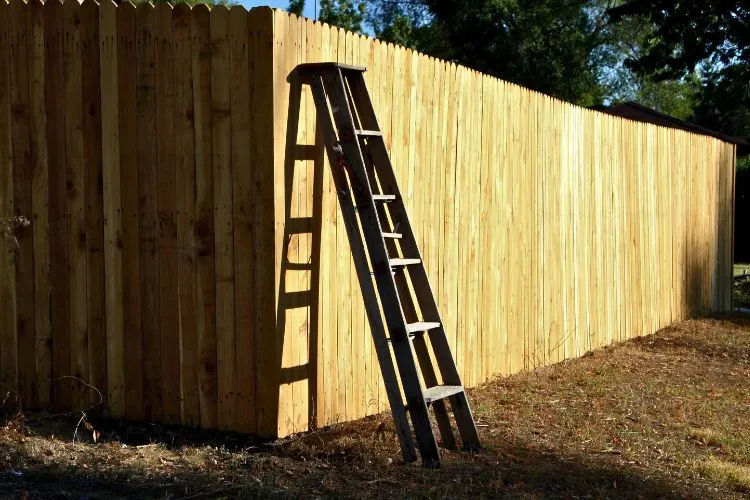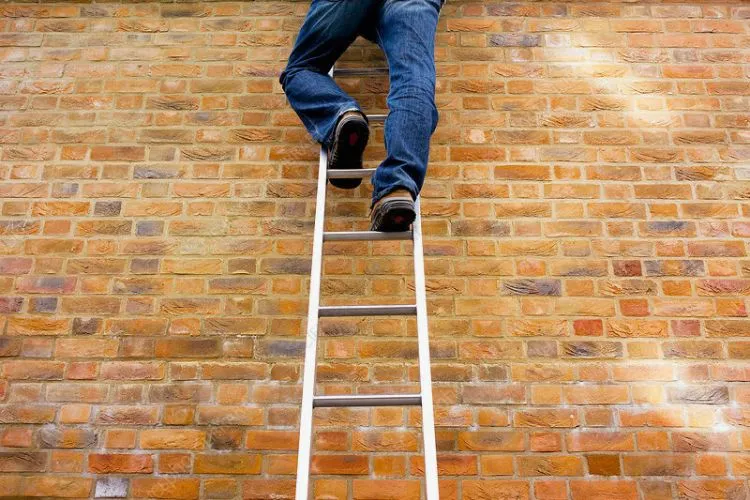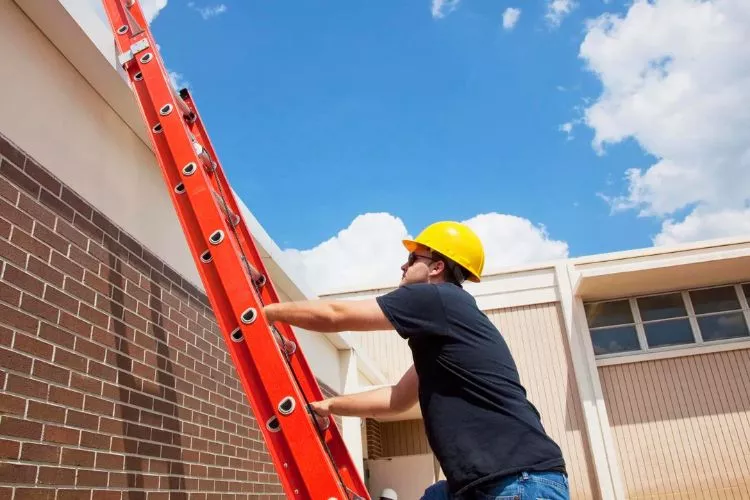Climbing a ladder may seem simple, but ensuring that it is positioned at the correct angle is crucial for safety and stability.
When using a ladder, it is important to understand the optimal angle to prevent accidents, injuries, and potential property damage. But, do you know what angle should a ladder be at?
Typically a 75-degree angle is the best for a ladder because it provides optimal balance of stability and safety. This angle also keeps the ladder secured and reduces all the risks of tipping or slipping.
This article will further explore the factors that determine the ideal angle for a ladder and guide how to set up a ladder properly for various tasks.

What angle should a ladder be at?
The ideal angle for setting up a ladder is typically a 75-degree angle. This angle provides the optimal balance of stability and safety, ensuring the ladder remains secure while reducing the risk of tipping or slipping.
🪜Measuring and Achieving the Proper Angle
To achieve the proper 75-degree angle:
- Place the ladder’s base on a stable, level surface.
- Measure the distance from the wall or surface the ladder will be leaning against.
- Position the ladder’s base one-fourth of the ladder’s working length away from the wall or surface. For example, if your ladder is 16 feet long, place the base 4 feet away from the wall.
- Use a level to ensure the ladder is vertical and straight.
- Double-check the angle by touching the ladder’s base with your toes and extending your arms straight out in front of you. Your fingertips should touch the ladder’s rungs at shoulder height.
🪜Tips for Ensuring a Stable Ladder Setup
- Secure the ladder base to prevent slipping, using non-slip pads or sandbags if necessary.
- Extend the ladder 3 feet above the roofline or working surface to provide a secure handhold.
- Have a spotter or helper hold the ladder while you climb, especially when carrying tools or materials.
🪜Common Mistakes to Avoid
- Leaning the ladder against a surface instead of securing it to the wall or surface.
- Overreaching while on the ladder can cause tipping or loss of balance.
- Wear appropriate footwear with non-slip soles.
- Avoid electrical hazards using a non-conductive ladder and maintain a safe distance from power lines.
- Know the weight limits of your ladder and avoid overloading it with tools or materials.
Setting up a ladder at the proper angle ensures safety and stability while working at heights.
By following the guidelines outlined in this article, you can minimize the risks associated with ladder use and confidently tackle any project with the assurance that you adhere to the best ladder safety practices.
What angle is an unsafe ladder?
An unsafe ladder angle can be categorized as too steep and too shallow.

- Too Steep Angle: When a ladder is set up at a too steep angle, it is closer to being vertical or perpendicular to the ground. This increases the risk of the ladder tipping backwards or the user losing their balance while climbing. A steep angle also puts more strain on the user’s arms and shoulders, making it harder to maintain a secure grip and increasing the risk of falling.
- Too Shallow Angle: On the other hand, a ladder set up at a too shallow angle is positioned further away from the supporting surface, causing it to lean at a lower angle against the wall. This can lead to the ladder sliding out at the base, causing the user to fall. A shallow angle also increases the pressure on the ladder’s side rails, which can cause them to bend or break, leading to a collapse.
What is the formula for the angle of a ladder?
The angle of a ladder can be calculated using the trigonometric function tangent (tan). Given the height (h) the ladder reaches on a wall, and the distance (d) the base of the ladder is from the wall, the angle (θ) can be found using the formula:
tan(θ) = h / d
To find the angle in degrees, you need to use the inverse tangent function (arctan or tan^(-1)):
θ = arctan(h / d)
Ensure your calculator is set to degrees if you want the angle in degrees.
What is the 4 to 1 rule when using a ladder?
The 4 to 1 rule, also known as the 1 in 4 rule, is a safety guideline to ensure the proper angle when setting up a ladder.
According to this rule, for every four feet of vertical height (working length) between the ground and the point where the ladder contacts the supporting surface, the base should be placed one foot away from the supporting surface.

In simpler terms, the 4 to 1 rule states that the distance between the ladder base and the wall or supporting surface should be one-fourth of the ladder’s working length. This helps to achieve the recommended 75-degree angle, ensuring stability and safety while using the ladder.
For example, if you are using a 12-foot ladder to reach a height of 12 feet, you should place the base 3 feet away from the supporting surface (12 feet / 4 = 3 feet). Following the 4 to 1 rule helps to minimize the risk of the ladder slipping or tipping while in use.
Factors Affecting Ladder Stability
While the ideal 75-degree angle and the 4 to 1 rule are essential for ladder safety, there are other factors that can impact ladder stability. Environmental conditions and the surface where the ladder is placed play a significant role in how safe and secure the setup will be.
1. Ground Surface The ground on which the ladder rests should be stable and level. Uneven or soft surfaces like gravel, sand, or grass can cause the ladder to shift or tip over.
It’s always best to place the ladder on a hard, level surface such as concrete or asphalt. If this is not possible, consider using stabilizing accessories such as ladder levelers or adjustable feet.
2. Weather Conditions Weather can greatly influence ladder safety. Windy conditions, for instance, can make climbing a ladder dangerous. If it’s too windy, it’s best to delay your task or secure the ladder with additional supports.
Rain can also cause the ladder to become slippery, especially on metal rungs, which increases the risk of slipping. Always inspect the ladder and surrounding environment before use in adverse weather.
3. Ladder Condition A ladder that is in poor condition poses significant safety risks. Always check your ladder for signs of wear, such as loose or missing rungs, cracks in the rails, or any signs of rust or corrosion.
A damaged ladder can compromise your safety and stability, so it’s essential to inspect it before each use. If the ladder shows signs of significant damage, replace it immediately.
4. User Behavior In addition to positioning the ladder correctly, proper ladder use is crucial. Avoid sudden movements or overreaching while on the ladder, as these actions can disrupt your balance and increase the risk of falling.
Always face the ladder when climbing, and maintain three points of contact—two hands and one foot or two feet and one hand—at all times to ensure stability.
By considering these additional factors, you can further reduce the risk of accidents and enhance ladder safety while working at heights.
Conclusion:
The appropriate angle for placing a ladder is crucial for ensuring safety and stability during use.
As we have discussed in this article, the recommended angle is typically around 75 degrees, or following the 4-to-1 rule, where for every 4 feet of height the ladder reaches on the wall, the base of the ladder should be 1 foot away from the wall.
By adhering to these guidelines and regularly inspecting ladders for any signs of wear or damage, users can minimize the risk of accidents and injuries.


